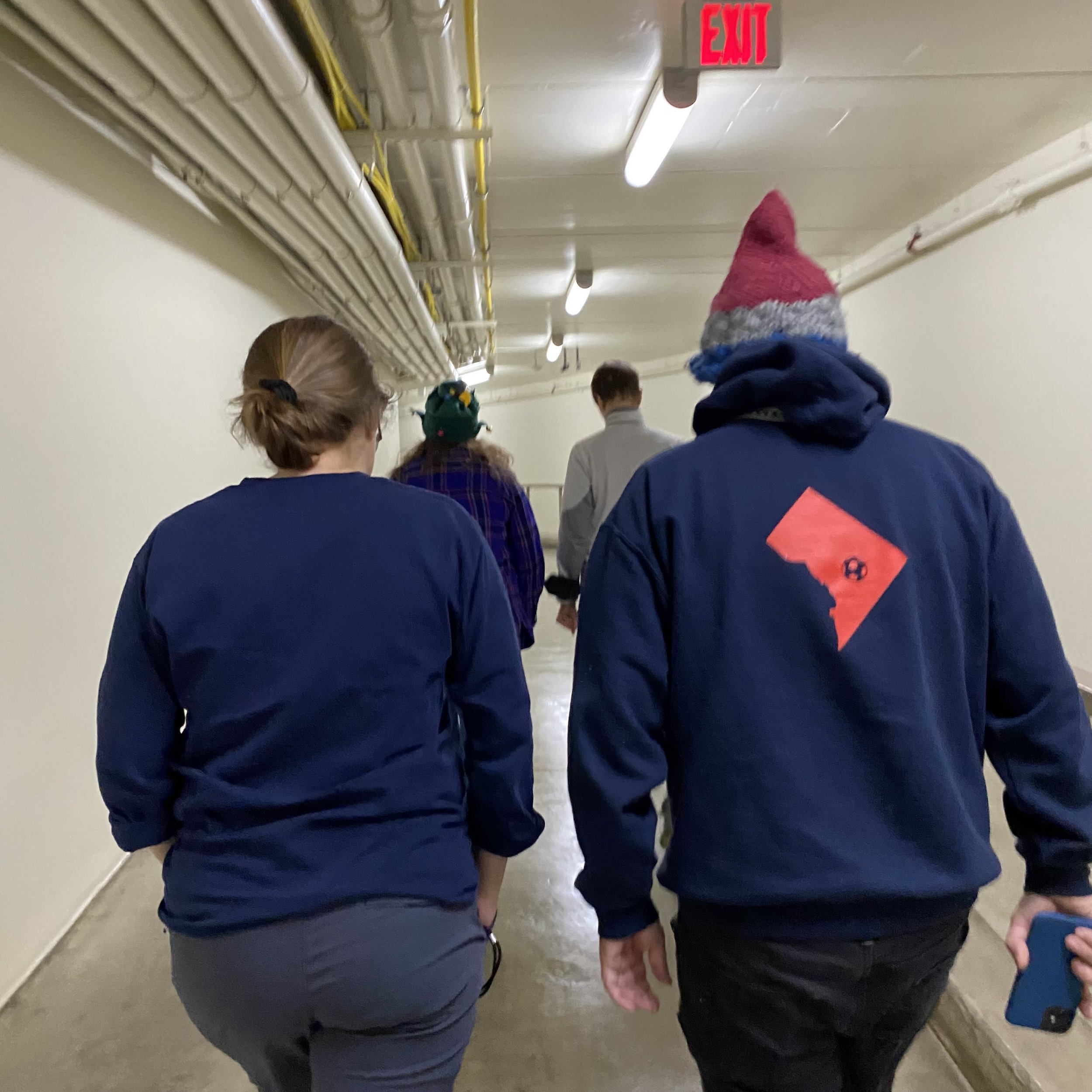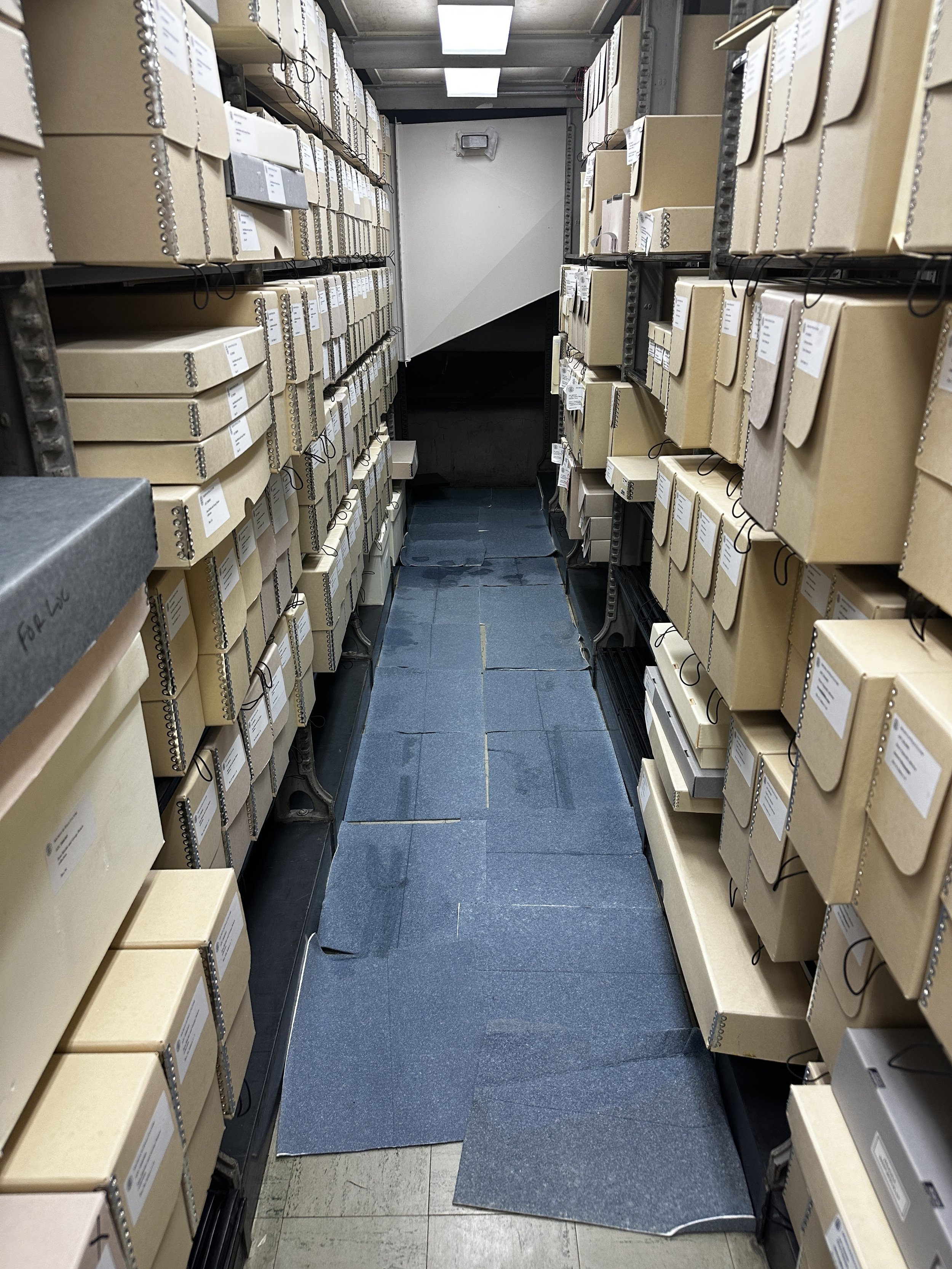Collections recovery during water emergencies
Broken pipes
Location: Jefferson, Adams, and/or Madison Buildings, Capitol Hill
Date: 2019, 2022, & 2023
Response: The Preservation Emergency Response team is composed of over 15 conservators, collections care specialists, and preservation specialists from the Conservation and Collections Care Division that work together towards mitigating damage to collection materials affected by multiple conditions being water leakages due to bursted or broken pipes the most recurrent.
Workflow: Emergency Response and Recovery for Water-Damaged Materials
1. Team Notification and Deployment:
The team is promptly notified about the emergency situation.
Leaders are deployed to the site while wearing Personal Protective Equipment (PPE) to conduct a preliminary survey of the affected stacks and books.
2. Action Plan Development:
An action plan is drawn up based on the assessment of the preliminary survey.
Teams are assigned specific tasks and are equipped with response materials required for the situation.
3. Area Preparation and Materials Stabilization:
In the affected area, several fans are strategically placed to promote air circulation, stabilize the temperature and humidity, and accelerate the drying process of floors and stacks.
Drying materials, such as absorbent pillows and socks, are placed on the floor of affected areas to absorb excess water.
4. Removal and Transportation of Affected Materials:
Affected materials, including books, are carefully removed from the stacks.
They are loaded into carts, ensuring proper handling and protection during transportation.
The carts are then transported to the Madison Building, where the materials are isolated in the Recovery Room.
5. Recovery Room Preparation:
The Recovery Room is prepared for the arrival of the carts containing the affected materials.
Several fans are turned on to maximize air circulation within the room.
Tables in the room are covered with blotting material to create a suitable drying surface.
6. Assessment and Sorting:
Working in teams, the books are placed on the blotter-covered tables.
Each book is carefully evaluated based on its level of water saturation and structural integrity (paperback or hardcover).
Books are sorted out based on their wetness/coldness and physical condition.
7. Drying Process:
Books with minimal moisture receive less intensive treatment and are allowed to air dry in fanning possition.
Books with significant planar distortion are placed under a blotter and weighed down to encourage flattening during the drying process.
Textblocks of the books are placed in a fan position, interleaved with b-flute board for better air circulation, and carefully loaded into carts for drying.
8. Ongoing Monitoring:
Throughout each stage of the process, team members frequently check the condition of the books and monitor the stack area to replace saturated absorbent pillows and socks.
Special attention is paid to identifying any possible mold growth, particularly in the gutters of the books or under stack furniture.
Regular monitoring continues for several days to ensure the materials are drying effectively and to address any emergent issues promptly.
By following this workflow, the emergency response and recovery team aims to efficiently and effectively preserve and restore the water-damaged materials, minimizing further damage and ensuring their long-term usability.
Collections Recovery Photography:
Katherine Kelly, Andrew Rob, Julie Biggs, and Verónica Mercado are deployed on December 24, 2022 to survey the affected stack area located in Adams building due to a broken pipe.
Placement of absorbent material on the floor of affected water after a rain filtration incident that affected an estimate of 200 books located in the Jefferson building.
Fanning out of books post water leakage.







